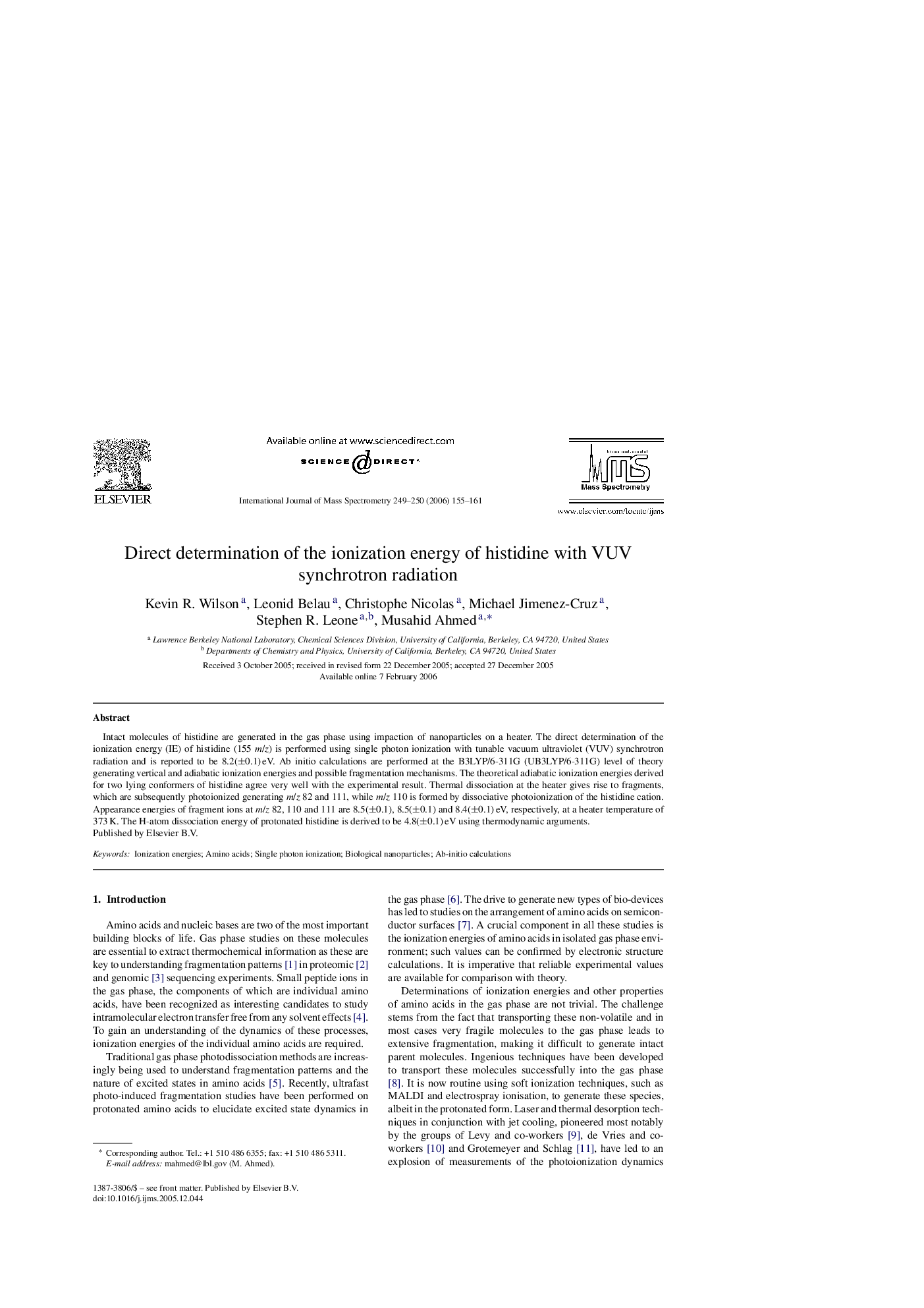| Article ID | Journal | Published Year | Pages | File Type |
|---|---|---|---|---|
| 1194308 | International Journal of Mass Spectrometry | 2006 | 7 Pages |
Intact molecules of histidine are generated in the gas phase using impaction of nanoparticles on a heater. The direct determination of the ionization energy (IE) of histidine (155 m/z) is performed using single photon ionization with tunable vacuum ultraviolet (VUV) synchrotron radiation and is reported to be 8.2(±0.1) eV. Ab initio calculations are performed at the B3LYP/6-311G (UB3LYP/6-311G) level of theory generating vertical and adiabatic ionization energies and possible fragmentation mechanisms. The theoretical adiabatic ionization energies derived for two lying conformers of histidine agree very well with the experimental result. Thermal dissociation at the heater gives rise to fragments, which are subsequently photoionized generating m/z 82 and 111, while m/z 110 is formed by dissociative photoionization of the histidine cation. Appearance energies of fragment ions at m/z 82, 110 and 111 are 8.5(±0.1), 8.5(±0.1) and 8.4(±0.1) eV, respectively, at a heater temperature of 373 K. The H-atom dissociation energy of protonated histidine is derived to be 4.8(±0.1) eV using thermodynamic arguments.
